Demystifying Data-Driven Media Buys: 10 Best Practices for Audience Targeting

No matter your marketing goal, data is the answer to achieving the best results. But data-driven advertising pulls in several data types from myriad sources, requiring methodical analysis and complicating your path to confident strategy.
As media fragmentation has intensified and consumer behaviors have shifted, Tunnl has continued to develop an audience intelligence platform and audience targeting solutions to help media buyers conquer the complexities of data-driven, audience-based media buys and maximize their impact. Our clients’ success has revealed a clear set of best practices for effective audience targeting, all utilizing data to its fullest potential to power campaigns that reach the right people, driving action and impact.
How can you incorporate these data-driven best practices into your audience-based media buys? We’ll give you a step-by-step guide to developing data-driven audience targeting parameters and applying audiences to your advertising campaigns, as well as how to optimize for ongoing success.
What is Audience-Based Media Buying, and Is It Effective?
Audience-based media buying is an advertising strategy that targets specific groups of people based on their likelihood to be interested in a product, service, or issue. Audiences typically get grouped based on factors including:
- Demographics
- Buying habits
- Beliefs or values
- Hobbies or interests
- Lifestyle
- Group membership
- Preferences
Audience-based campaigns are particularly effective for public affairs, issue advocacy, and purpose-driven marketing because of their focus on creating emotional or value-based connections with consumers and voters. 
Media buys informed by an audience’s habits, interests, and values are maximally effective because they reach people who care about the campaign messaging, and are maximally efficient because they target the audience where they consume media the most.
But that’s if your audience-based media buy is done correctly.
It’s easy to maximize the impact of your advertising with audience-based media buying if you know what you’re doing. It is a powerful approach when thoughtfully and strategically applied to campaigns.
So, how can you use data to get the most out of your audience-based media buys?
What are the Best Practices for Data-Driven Audience Targeting?
Behind every audience is a wealth of data; that’s the secret to a successful audience-based media buy:
✅ Get great data✅ Understand what’s in it
✅ Apply your findings appropriately
You'll need to make a lot of data-driven decisions to achieve accurate, efficient audience targeting for your campaigns.
These best practices demystify what that means and how to do it.
1. Define Your Target Audience
Square one for effective audience targeting is defining who you need to reach with your campaign. Your campaign goals will help you determine the answers to these questions. Consider what action you want people to take, and who is most likely to take that action. Those people become your target audience. They are the ones who need to see your message.
 You may have a general idea of who is in your target audience, but it helps to be specific.
You may have a general idea of who is in your target audience, but it helps to be specific.
- How old are they?
- Do you need to reach men, women, or everyone?
- Do they make a certain amount of money?
- Does their political party affiliation matter?
- What are they interested in?
- What do they care about?
If you're unsure about who is in your target audience, audience intelligence platforms can help you nail down the finer points through audience insights.
How Tunnl Helps
Audience insights, including key demographics and media mixes, are available for your target audience in our audience intelligence platform. Choose any audience from our extensive library of interest- and issue-based audiences or build an audience in minutes with our Audience Builder to analyze who makes up that group and where to reach them.
2. Define Your Audience Geography
Consider locality when defining your campaign targeting. Where are the people you need to reach?
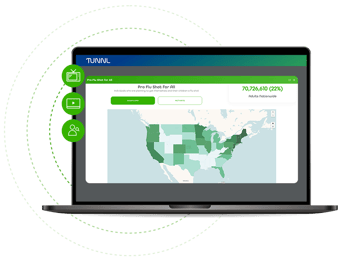 National targeting, when refined with other audience attributes, can be effective for agencies trying to achieve widespread reach with campaigns for brands that serve customers nationwide or for issues like federal legislation.
National targeting, when refined with other audience attributes, can be effective for agencies trying to achieve widespread reach with campaigns for brands that serve customers nationwide or for issues like federal legislation.
Local targeting - whether that means a certain state, specific congressional district, or media market - may be more beneficial for some campaigns. Accurate local targeting is a must for campaigns that have a limited scope, like local ballot initiatives.
However, localized targeting can also be an asset for segmenting your broader media buys. Even on national campaigns, dividing your audience and ad spend into local campaign variants allows for more targeted messaging and ad placements.
Choose locations according to your campaign goals to achieve the most effective targeting.
How Tunnl Helps
In the Tunnl platform, you can select from different geographies to see how data for your target audience varies from place to place.
Select from any of the following geographies to see localized demographics, audience counts, and local media mixes, including linear TV preferences.
- National
- State
- City
- County
- Zip Code
- Media Market
- Media Market by State
- Congressional District (CD)
- State Senate
- State Legislature
3. Understand Media Consumption
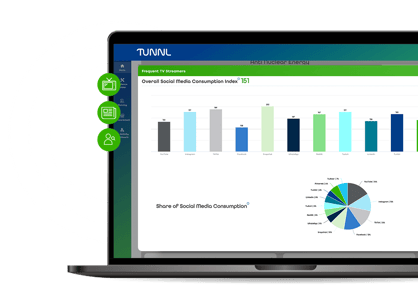 How your audience consumes media is a vital part of creating targeted media buys. The “spray and pray” method of distributing your message across every ad platform available and hoping for qualified impressions is a sure way to waste your precious ad budget.
How your audience consumes media is a vital part of creating targeted media buys. The “spray and pray” method of distributing your message across every ad platform available and hoping for qualified impressions is a sure way to waste your precious ad budget.
Lean into media consumption data to understand where, how, and how often your target audience watches TV, scrolls social media, and listens to music or podcasts. Media mixes accomplish this for you, and provide a blueprint for how to reach your audience efficiently despite media fragmentation.
How Tunnl Helps
Tunnl offers media mix insights for your target audience, which show your audience's preferences for:
Television formats
- Live broadcast and cable
- Video on demand
- TV and mobile streaming
- Traditional and digital radio
Social networks
- YouTube
- TikTok
- Meta (Facebook)
- X (Twitter)
- And more
Streaming platforms
- Netflix
- Hulu
- Amazon Prime Video
- Max (HBO Max)
- ESPN+
- Paramount+
- YouTubeTV
- And more
National and local media mixes in Tunnl's platform show you the media consumption habits of an audience in any U.S. geography.
4. Use Issue-Based Audience Targeting
Demographics can be helpful targeting tools, but issue-based targeting is a more direct method for connecting with the audiences who are most likely to be compelled by your message.Issue-based audiences are made up of people who all feel the same way about a particular subject, like people who are opposed to ESG state investments or those who support the legalization of sports betting.
By targeting your media buys to an audience aligned with the issues in your campaign, you reach passionate or persuadable people who are interested in your message and will be more compelled to take action.
How Tunnl Helps
Tunnl creates hundreds of prebuilt issue-based audiences that agencies can activate instantly in their clients’ campaigns.
5. Don’t Fear Granularity
Your target audience should not include everyone. Broad targeting can put you at risk for budget waste, unqualified impressions, and diluted impact.
Hone your audience based on factors related to your campaign, like:
- Geography
- Media consumption behavior
- Issues or interests
Take a campaign intended to raise awareness about data privacy legislation in a particular region, for example. A national campaign targeting all Facebook users may be less effective than a campaign targeted to residents of Utah who support big tech regulation and are likely to vote in the next election.
Audience specificity can help you maximize your budget by reaching more of the right people.
How Tunnl Helps
Audience counts are instantly available for all of Tunnl’s audiences prebuilt, issue-based audiences within our audience intelligence platform.
In addition to location filtering, Tunnl’s Audience Builder enables media buyers to combine, overlap, or exclude several audiences to create multi-issue audiences within minutes.
As you apply filters and combine, overlap, and exclude audiences with our Audience Builder, you’ll always know roughly how many people are in your target audience. This can help you determine if you need to broaden or narrow your targeting parameters to reach the ideal audience size.
6. Exclude Irrelevant Segments
You know who you want to reach with your ads - and likely have an idea of who you don’t.
 Exclusion audiences are powerful tools for trimming the fat off your audience-based media buys. They remove erroneous people from your targeting to ensure your ad dollars go toward reaching qualified, interested, and relevant audiences.
Exclusion audiences are powerful tools for trimming the fat off your audience-based media buys. They remove erroneous people from your targeting to ensure your ad dollars go toward reaching qualified, interested, and relevant audiences.
As you build your target audience, consider it broadly. Identify who in it may not be the most ideal targets, then remove them with exclusion tools in your ad platform, DSP, or audience intelligence platform.
How Tunnl Helps
The exclusion feature in Tunnl’s Advanced Search and Audience Builder tools enable media buyers to remove irrelevant or counterintuitive groups from their target audience quickly.
For example, a solar panel company may want to reach renewable energy supporters about a new government stipend for panel installation in rural areas. It would be advantageous to exclude people who are likely members of urban communities from the renewable energy supporters audience, to avoid reaching people who do not qualify for the advertised service.
Renewable Energy Supports, Likely Rural Community, and Likely Urban Community are all available audiences in Tunnl’s prebuilt audience library.
7. Audit Your Targeting
Data-driven audience targeting is an ongoing endeavor. Sentiments change, your goals shift, and time will tell if your targeting is effective. All require agencies to rethink their audience parameters often. 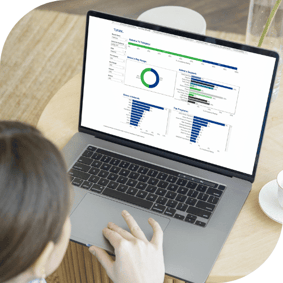
Outline audiences that are unique to each of your campaigns and use your campaign results as a barometer for how effective your targeting has been. Modify or update your parameters accordingly.
Also, ensure that the audience data you’re using is up to date, especially if you’re using issue-based audiences in your media buys. Opinions change, and your audiences need to keep up. Working with outdated sentiment data can lead to inaccurate targeting and potentially damage consumer trust.
How Tunnl Helps
Routine audience refreshes keep Tunnl audience data up-to-date, even as consumer and voter sentiments change.
8. Monitor Campaign Performance
Any advertising strategy is measured in campaign results. Audience-based media buying is no different. Stats like cost-per-click, impressions, and conversions are helpful for assessing the validity of your targeting.
There are also a few novel ways to monitor the influence of your audience-based campaigns outside of traditional metrics.
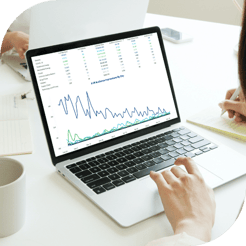 One way to measure your impact is brand favorability. Establish a baseline of how many people like or dislike a brand before your campaign begins. Throughout your campaign and after it concludes, poll people on the brand’s favorability again to see if more or less people have converted to either camp. This same experiment can be conducted with brand awareness, measuring how many people know of the brand or issue you’re campaigning on before and after the campaign has run its course.
One way to measure your impact is brand favorability. Establish a baseline of how many people like or dislike a brand before your campaign begins. Throughout your campaign and after it concludes, poll people on the brand’s favorability again to see if more or less people have converted to either camp. This same experiment can be conducted with brand awareness, measuring how many people know of the brand or issue you’re campaigning on before and after the campaign has run its course.
Another method for measuring the impact of your audience-based media buys is through media attention. Using earned media data, keep an eye on how often and in what context your brand, industry, topic, etc. is organically mentioned in TV news media or on social media.
How Tunnl Helps
Using Tunnl’s paid and earned media dashboards, agencies can track how their campaigns are driving and influencing the subjects they’re advertising on. Customized earned media dashboards display the linear TV channels and programs that mention a cluster of topics subscribers want to track, surfacing clips for each mention so agencies keep track of the context in which their clients are organically mentioned. Paid media dashboards offer similar tracking for all the ad opportunities purchased by your clients, their allies, and competitors.
Both solutions show how media is performing within your target audience, providing a glimpse into the factors influencing a brand's reputation and favorability.
Additionally, as part of Tunnl’s custom audience subscription, bespoke audiences are regularly refreshed to keep them relevant and track movement. This provides a baseline for change-over-time analysis as people move from unfavorable about a brand to favorable, or from issue unaware into issue-aware audiences.
9. Incorporate Competitor Research
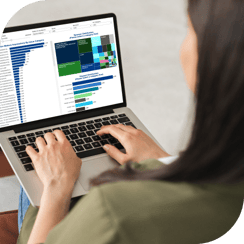 Don’t advertise in a silo. Your products, services, and issues exist in a broader consumer ecosystem that influences perceptions and behaviors. It’s important to understand what your target audience is seeing from competitors, news outlets, and their peers if you want to comprehend how to optimize your ads.
Don’t advertise in a silo. Your products, services, and issues exist in a broader consumer ecosystem that influences perceptions and behaviors. It’s important to understand what your target audience is seeing from competitors, news outlets, and their peers if you want to comprehend how to optimize your ads.
Assess competitor ads, where possible, and research your industry, client, or issue to gain a holistic understanding of what audiences will be exposed to alongside your paid media.
How Tunnl Helps
Media measurement dashboards in Tunnl's platform show not only your paid and earned media presence, but also that of competitors.
Paid media dashboards show who else is advertising to your target audience, an estimate of how much they’re spending, and more.
Earned media dashboards track topics relevant to your clients and present who and what else is getting media attention around that subject, so you can analyze what your target audience is seeing and hearing about an industry, event, brand, etc.
10. Customize Your Targeting
What works for one client may not work for another. Every campaign deserves customized targeting rooted in reliable audience data and utilizing issue-based segmentation to achieve the best results.
Obtaining audience data on your own can be costly, time-consuming, and complicated (especially as consumer data privacy laws continue to evolve). Third-party data providers can be an excellent resource for gathering, organizing, and analyzing data from several sources.
Some data providers also offer custom audience services so you can delegate the task of collecting, storing, organizing, and transferring data to secure data handlers - and reap all of the rewards of custom targeting for yourself.
How Tunnl Helps
A custom audience subscription with Tunnl is the ultimate targeting solution for serious advertisers campaigning on niche issues. We work with you to develop a survey that is then fielded in your desired geography to develop multiple unique-to-you audiences.
Improve Your Audience Targeting Instantly
Data-driven decision-making is what every agency aspires to - and promises to clients - but few have harnessed the full potential of audience data for their media buys.
Be one of the few who does.
All the audience data you need to deploy strategic, high-impact advertising campaigns resides in the Tunnl platform. With audience insights, including media mixes and demographics, for hundreds of prebuilt audiences and your Tunnl custom audiences, it’s easy to plan data-driven media buys that are maximally effective and efficient in reaching your clients’ target audiences and driving impact. Decision intelligence to power your audience-based media buys puts your agency in complete, confident control from ad planning to campaign measurement, delivering competitive results every time.
To access easy-to-interpret data visualizations, the industry’s best audiences, and powerful audience intelligence tools, explore the Tunnl platform.




